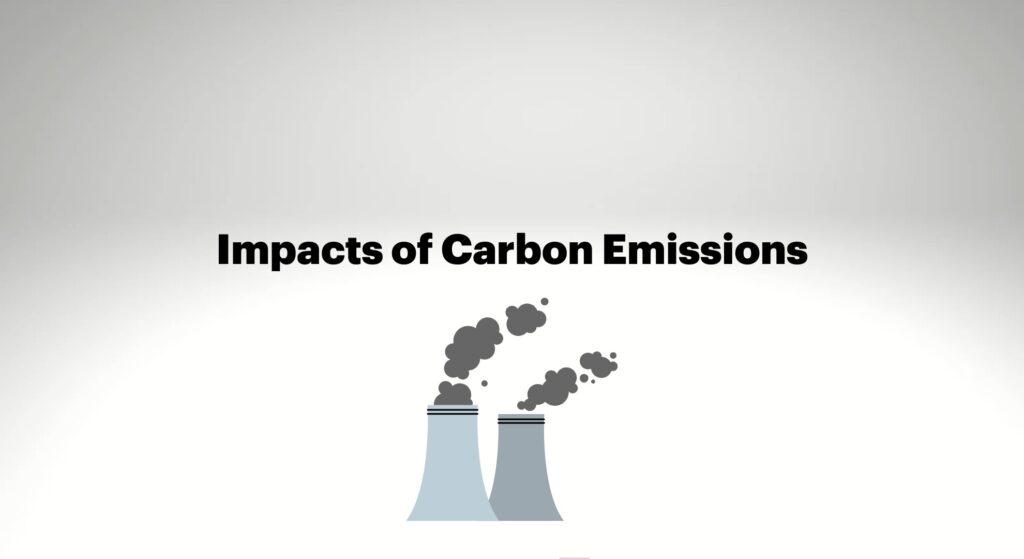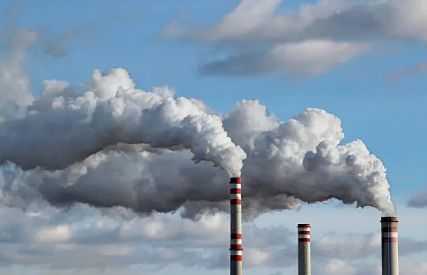Table of Content
Carbon emission sources play a crucial role in climate change, affecting both the environment and human health. To effectively address and reduce carbon emissions, it’s essential to understand their primary sources and the strategies available to mitigate their impact. This comprehensive guide will explore the major sources of carbon emissions, their effects, and potential solutions to combat them.
Overview of Carbon Emissions
Carbon emissions mainly refer to the release of carbon dioxide (CO₂) into the atmosphere, largely driven by human activities. Since the Industrial Revolution, CO₂ levels have surged, leading to global warming and significant climate changes. Human activities are the primary contributors to this increase, with fossil fuel combustion being the biggest factor.
Carbon Emissions Sources
Carbon emissions originate from several key sectors. Understanding these sources is key to creating effective mitigation strategies.
1. Energy Production
Energy production is the largest source of carbon emissions globally. The burning of fossil fuels—such as coal, oil, and natural gas—accounts for a significant portion of global greenhouse gas emissions.
-
- Coal: Coal-fired power plants are major carbon emitters due to their high carbon content, even though their use has decreased in some regions.
-
- Natural Gas: Although it burns cleaner than coal, natural gas still contributes notably to carbon emissions, particularly when leaks occur during extraction and transportation.
-
- Oil: Oil is primarily used in transportation and heating, and its combustion adds substantially to global carbon emissions.
2. Transportation
The transportation sector is a major contributor to carbon emissions, responsible for a substantial share of global emissions.
-
- Road Transport: Vehicles such as cars, trucks, and buses are significant sources of emissions due to their reliance on gasoline and diesel.
-
- Aviation and Shipping: Although these modes of transport contribute less compared to road transport, they still play a role in global carbon emissions.
3. Industry
Industrial activities are responsible for a significant portion of carbon emissions, arising from energy use and specific chemical processes.
-
- Cement Production: This industry is particularly carbon-intensive, contributing around 5% of global emissions due to the chemical reactions involved in producing cement.
-
- Metal and Chemical Production: Other industrial processes, such as steel and chemical manufacturing, also significantly contribute to carbon emissions through energy consumption and chemical reactions.
4. Agriculture
Agriculture is another notable source of carbon emissions, mainly through livestock and soil management practices.
-
- Enteric Fermentation: Livestock, especially cattle, produce methane (CH₄) during digestion, a potent greenhouse gas.
-
- Fertilizer Use: The use of nitrogen-based fertilizers results in nitrous oxide (N₂O) emissions, another significant greenhouse gas.
5. Land Use Changes
Deforestation and land use changes are major contributors to carbon emissions, as they account for a substantial percentage of human-induced emissions.
-
- Deforestation: Clearing forests for agriculture or development releases the carbon stored in trees into the atmosphere.
-
- Wetlands and Peatlands: Draining these areas for agricultural purposes also releases large amounts of carbon.
Impacts of Carbon Emissions

The rise in carbon emissions has severe consequences for our planet and its ecosystems:
-
- Global Warming: Elevated CO₂ levels trap heat in the atmosphere, leading to rising global temperatures.
-
- Extreme Weather Events: Increased carbon emissions contribute to more frequent and severe weather events like hurricanes, droughts, and floods.
-
- Ocean Acidification: Excess CO₂ absorption by oceans leads to acidification, which impacts marine ecosystems and fisheries.
Mitigation Strategies
Addressing carbon emissions requires a range of strategies aimed at reducing their sources and impacts.
1. Transition to Renewable Energy
Switching from fossil fuels to renewable energy sources is a key strategy to lower carbon emissions from the energy sector.
-
- Investment in Renewables: Increasing investments in renewable energy technologies such as solar, wind, and hydroelectric power can help shift the energy mix away from fossil fuels.
-
- Energy Efficiency: Improving energy efficiency in buildings, transportation, and industry can also reduce overall emissions.
2. Sustainable Transportation
Enhancing transportation systems and promoting sustainable practices can reduce emissions in this sector.
-
- Public Transit: Expanding and improving public transportation options helps reduce the reliance on personal vehicles.
-
- Electric Vehicles (EVs): Supporting the adoption of electric vehicles can significantly lower emissions from the transportation sector.
3. Sustainable Agriculture Practices
Adopting sustainable agricultural practices can mitigate emissions from farming activities.
-
- Improved Livestock Management: Techniques such as rotational grazing and using feed additives can help reduce methane emissions from livestock.
-
- Precision Agriculture: Applying fertilizers more efficiently through technology can minimize nitrous oxide emissions.
4. Forest Conservation and Reforestation
Protecting forests and restoring degraded lands can help sequester carbon and reduce emissions.
-
- Afforestation: Planting trees in deforested areas captures carbon from the atmosphere and helps mitigate emissions.
-
- Sustainable Land Management: Practices that maintain soil health and prevent erosion can enhance carbon storage in soils.
Conclusion
Understanding the sources of carbon emissions is crucial for addressing climate change and protecting the environment. Key areas of concern include energy production, transportation, industry, agriculture, and land use changes. By implementing strategies such as transitioning to renewable energy, enhancing transportation systems, adopting sustainable agricultural practices, and conserving forests, we can mitigate the impact of carbon emissions and work towards a more sustainable future.
FAQs on Carbon Emission Sources
What are the main sources of carbon emissions?
The main sources of carbon emissions include energy production (fossil fuel combustion), transportation (road, air, and sea), industrial processes, agriculture, and land use changes such as deforestation.
How does energy production contribute to carbon emissions?
Energy production contributes to carbon emissions through the burning of fossil fuels like coal, oil, and natural gas. This process releases CO₂ into the atmosphere, significantly impacting global greenhouse gas levels.
Why are transportation emissions significant?
Transportation emissions are significant because vehicles rely heavily on petroleum-based fuels like gasoline and diesel, which release large amounts of CO₂ and other pollutants into the atmosphere.
What role does agriculture play in carbon emissions?
Agriculture contributes to carbon emissions through practices such as livestock production (which releases methane) and the use of nitrogen-based fertilizers (which release nitrous oxide).
How can we reduce carbon emissions from industry?
Reducing carbon emissions from industry can be achieved by improving energy efficiency, adopting cleaner technologies, and reducing emissions from chemical processes used in manufacturing.

Leave a Reply